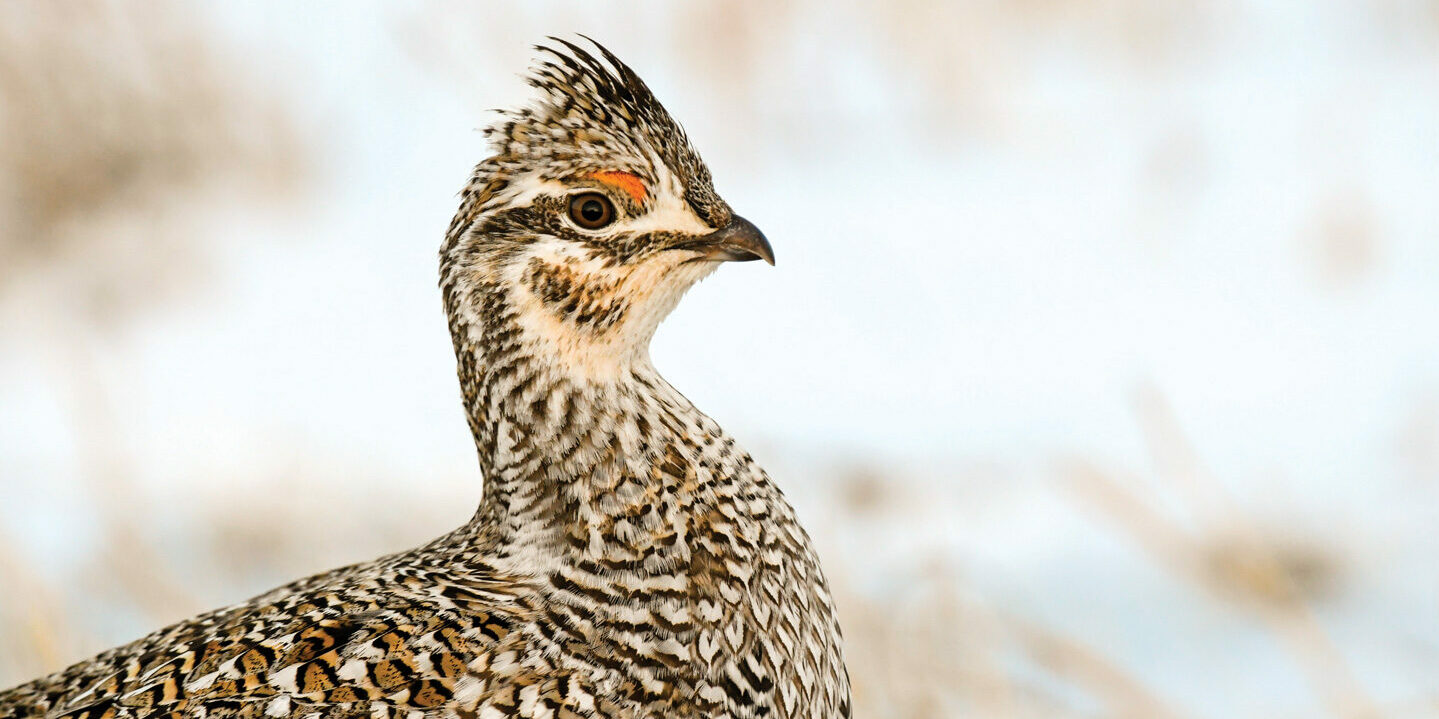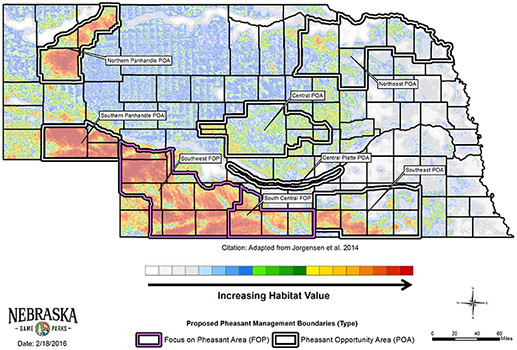
Whether you are seeking pheasants, quail, prairie grouse or partridge, Nebraska offers excellent opportunities, not to mention long seasons, affordable permits and great mixed-bag potential.

Hunting for upland game in Nebraska promises to be a good time for the those seeking adventure. With over 1.2 million acres of publicly accessible lands, Nebraska offers an abundance of public, walk-in hunting opportunities for upland game birds.
Get an overview of Nebraska’s upland bird season dates, bag/possession limits, shooting hours and much more through our online resources or in the Small Game & Waterfowl Guide.
Through a variety of programming, Nebraska offers an abundance of public, walk-in hunting opportunities for upland game birds. The Public Access Atlas displays these state, federal and conservation partner lands as well as private lands enrolled in the Open Fields and Waters program. After the printing of the atlas, an additional >40,000 acres upland habitat is enrolled in portions of western Nebraska and these are displayed in the Stubble Access Guide. The interactive atlas map displays all these lands and is updated regularly. More information about these and other opportunities can be found by visiting our Public Access Atlas or Where to Hunt page.
Learn about Nebraska’s habitat types and areas of the state that offer good upland hunting opportunities. For more information about Nebraska’s four upland species, visit our Upland Species page or contact your nearest Game & Parks office and ask to speak to a biologist.
Pheasants have a statewide distribution. However, certain areas offer more suitable habitat and thus, support higher numbers of pheasants than others. As a general rule, pheasant populations tend to increase as you move west across the state, with a few notable exceptions. In recent years, densities have been highest in southwestern Nebraska and portions of the Panhandle, in regions where there is an abundance of small grain crops, such as wheat and milo, as well as CRP on the landscape.
Further east, pheasants are heavily reliant on CRP fields, but these can often be isolated among vast acres of corn and soybeans. Better opportunities exist where larger blocks of CRP or wetlands are present on open landscapes, such as in the rainwater basins or across portions of northeastern Nebraska.
The map below shows areas across Nebraska where the landscape is generally most suitable to support higher pheasant numbers. Good opportunities, however, can be found in multiple other areas across the state where habitat and access opportunities overlap. Visit the Public Access Atlas to view detailed maps of public hunting areas across Nebraska and to plan your hunt.
Nebraska Game and Parks uses the Berggren Plan for Pheasants as part of its management strategy to grow Nebraska’s pheasant population and increase land open to hunting in areas with abundant pheasants. Efforts have been concentrated in the eight priority areas shown below on the map, and good public access opportunities exist within these areas – primarily on private lands enrolled in Game and Parks’ Open Fields and Waters Program.

Northern bobwhite quail are native to Nebraska and can be found across much of the state. The bobwhite’s core range has traditionally been throughout southeastern Nebraska and west along the southern border near Kansas. In year’s following mild winters, however, quail populations tend to expand north and west across the state where suitable habitat exists.
The majority of public hunting opportunities within Nebraska’s quail range occur on state wildlife management areas as well as on private lands enrolled in Nebraska’s Open Fields and Waters program. These areas are open to public, walk-in hunting and offer a variety of habitat types.
Bobwhite quail are considered an “edge species,” meaning they often occur where two or more different habitat types come together. Edges occur where grasslands converge with other cover types, such as cropland or woodlands. Weedy areas within grasslands can also create the edge habitat preferred by bobwhites. Dense stands of grass, such as CRP fields, are often avoided by quail because they are too thick. Instead, focus on the edges of CRP fields that border other cover types mentioned above or seek out weedy patches with ample amounts of bare ground.
Another key habitat element used extensively by bobwhites is woody cover, but it has to be the right kind. Unlike stands of mature trees, native shrub thickets, such as American plum, chokecherry — among others — and downed trees provide ideal loafing and escape cover for bobwhites. These habitat components serve as “covey headquarters” and are often found along field borders, fence lines or within grasslands. Those habitats adjacent to a high-quality food source, such as corn or milo, are ideal locations to find bobwhite quail.
Nebraska is home to two species of prairie grouse: the greater prairie-chicken and the sharp-tailed grouse. Greater prairie-chickens have a core range in the eastern Sandhills of Nebraska, but are also found where suitable habitat exists in portions of northeastern Nebraska, as well as south-central and southwestern Nebraska. There is a smaller population of greater prairie-chickens in southeastern Nebraska. Sharp-tailed grouse primarily occupy grasslands in the Sandhills of Nebraska, as well as west into the Panhandle. The range of both species overlaps in the Sandhills, and hunters may rarely encounter hybrid grouse in this area.
The Public Access Atlas displays some larger tracts of federal lands in the Sandhills which offer excellent prairie grouse hunting opportunities. Some CRP or grasslands enrolled in the OFW program can also hold good opportunities to the east, south or west of the Sandhills where the landscape is suitable for grouse.
As a rule of thumb, prairie grouse are found in highest numbers across large and open landscapes with few trees and an abundance of CRP or grassland. When pursuing prairie grouse along the mixed-grass, prairie dunes of the Sandhills, summer deferred pastures often provide thicker cover to hold birds. Within larger pastures, low-lying shrub thickets or forb patches can provide important food sources throughout the year.
Later in the season, birds may flush from farther distances, but prairie chickens, more so than sharp-tailed grouse, often frequent pivot corners or grasslands adjacent to corn or alfalfa fields. In other areas of the state, larger grasslands or pastures with weedy areas offering insects and seeds as food sources are often selected, but if the cover is too dense, grouse will avoid these areas.